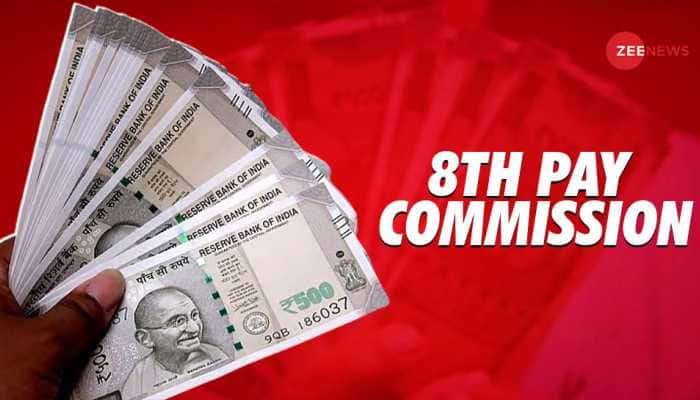Exclusive: Corrupt System and Media
Since Independence, perception about media has undergone a transformation. Despite being a business, media still plays a vital role as fourth pillar of democracy. When Essel group Chairman Subhash Chandra took up cudgels against corruption in the country, he came under attack.
Trending Photos
)
Since Independence, perception about media has undergone a transformation. Despite being a business, media still plays a vital role as fourth pillar of democracy.
However, there have been instances when media had to face allegations of being biased. A question was raised on its credibility.
Considering that media should be seen as unbiased and free, it is natural that questions will be raised if a media tycoon is seen favouring a particular political party.
But there are bigger questions for which answers would have to be found. After all, what is the reason that the situation has come to such a pass that a media baron is forced to act in this manner.
When Essel group Chairman Subhash Chandra took up cudgels against corruption in the country, he came under attack.
In October 2012, he and two editors of Zee Media Corp had an FIR lodged against them. Even after that, they were continuously harassed.
The current government’s misdeeds have once again brought to the fore memories of the struggle between Indian Express’ Ramnath Goenka and Rajiv Gandhi. One of the persons who led to the embitterment of relations between the two was late Dhirubhai Ambani.
Matters worsened to the point that the government tried to take over the Express towers in Delhi and Mumbai, but without success.
Ramnath Goenka had to then openly oppose Rajiv Gandhi and attempt to bring together all anti-Congress forces to oust the government.
Though Goenka was isolated several times, he continued his campaign with resilience and brought it to its logical end.
Subhash Chandra’s presence at a political rally in Kurukshetra has thus refreshed memories of the Ramnath Goenka-Rajiv Gandhi tussle.
Rightly, when someone like Subhash Chandra, who is not associated with politics, attends BJP’s prime ministerial candidate Narendra Modi’s rally and appeals for the ouster of the Congress-led government, then this can raise questions.
So, what compulsion led a non-political person like Subhash Chandra to make the appeal against Congress?
Even more pertinent is the question – Why has country’s media fraternity kept mum? Just like Mahabharat’s episode of de-robing of Draupadi, when the assembly of powerful members kept mum.
From October 2012 till now, has ZMCL group been targeted because it effectively highlighted the loot of India’s natural resources?
Has media’s role now been confined only to that of being the voice of those in power?
Isn’t it media’s responsibility to bring out the truth? And should media fraternity not support this endeavour?
To find answers to these questions is imperative for a healthy democracy and trustworthy media.
Media Scenario Post Independence
Media was relatively free post Independence and trusted by people. Growing literacy and freedom led to mushrooming of publications and media houses.
However, dark clouds hovered around 1975. When press spoke against Indira Gandhi, they were crushed with a heavy hand, as Emergency was declared. Freedom of Expression was shackled through censorship.
For 19 months, papers looked more like a document showcasing vetted press releases. Editors started leaving Editorials blank in protest.
In 1977 with Morarji Desai’s government coming in, certain semblance of normalcy was restored and media once again started functioning like before.
Media’s role in the Freedom movement
Media participated in freedom movement and press played a vital role.
Papers, pamphlets, hand bills were freely used for information dissemination.
The genesis of this can be found in 1780, when the first paper Bengal Gazette was started by James Augustus Hicky. He was the first to criticise the British rule through journalism.
His effort led to starting of many papers like that of Gangadhar Bhattacharya’s in 1819.
Raja Rammohan Roy used journalists as a tool for social reform. His Brahminical magazine spoke out against missionaries converting people into Chritianity. His Samwad Koumadi was purposed towards promoting women’s right.
James Buckingham, the editor of Calcutta Chronicle was vocal against the British Rule in 1818. He was exiled by the British for treason.
The first Hindi paper of India was started by Jugal Kishore Shukla in 1826 called Udant Martand, and was critical of British policies. British used every weapon in their armour to silence its voice, but nothing worked.
Finally, post 1857, British brought in laws to clamp down on press. The Gagging Act was one such example that censored anything that was anti-British.
Delhi’s Azimullah Khan’s Payam-e-Azadi was also severe in its criticism of the British Rule. The establishment tried to shut the paper and anyone carrying a copy was tortured.
The Vernacular Act was brought in as a censorship tool. All media houses were forced to show their stories before publishing and also sign a bond. The media of the country got together to oppose it, and continued the campaign against it till the Act was revoked.
Meanwhile, papers like The Hindu, The Pioneer, the Tribune, Amrit Bazaar Patrika etc came up.
Maratha and Kesari of Bal Gangadhar Tilak were also used to spread the message of freedom. Mahatma Gandhi also used journalism as a tool to unify the society and give direction to the freedom movement.
He wrote in Navbharat, Navjeevan, Harijan, Harijan Sevak, Harijan Bandhu among others.
Akbar Allahabadi had said during freedom movement:
Khicho na Kamano ko, na talwar nikalo, jab top mukabil ho, to akhbar nikalo.
That was the era when media was more powerful than swords. Media can still be that powerful, but it needs to be unified and have zeal.
Watch the programme here:
Stay informed on all the latest news, real-time breaking news updates, and follow all the important headlines in india news and world News on Zee News.
Advertisement
Live Tv
Advertisement







)
)
)
)
)
)
)
)
)
)
